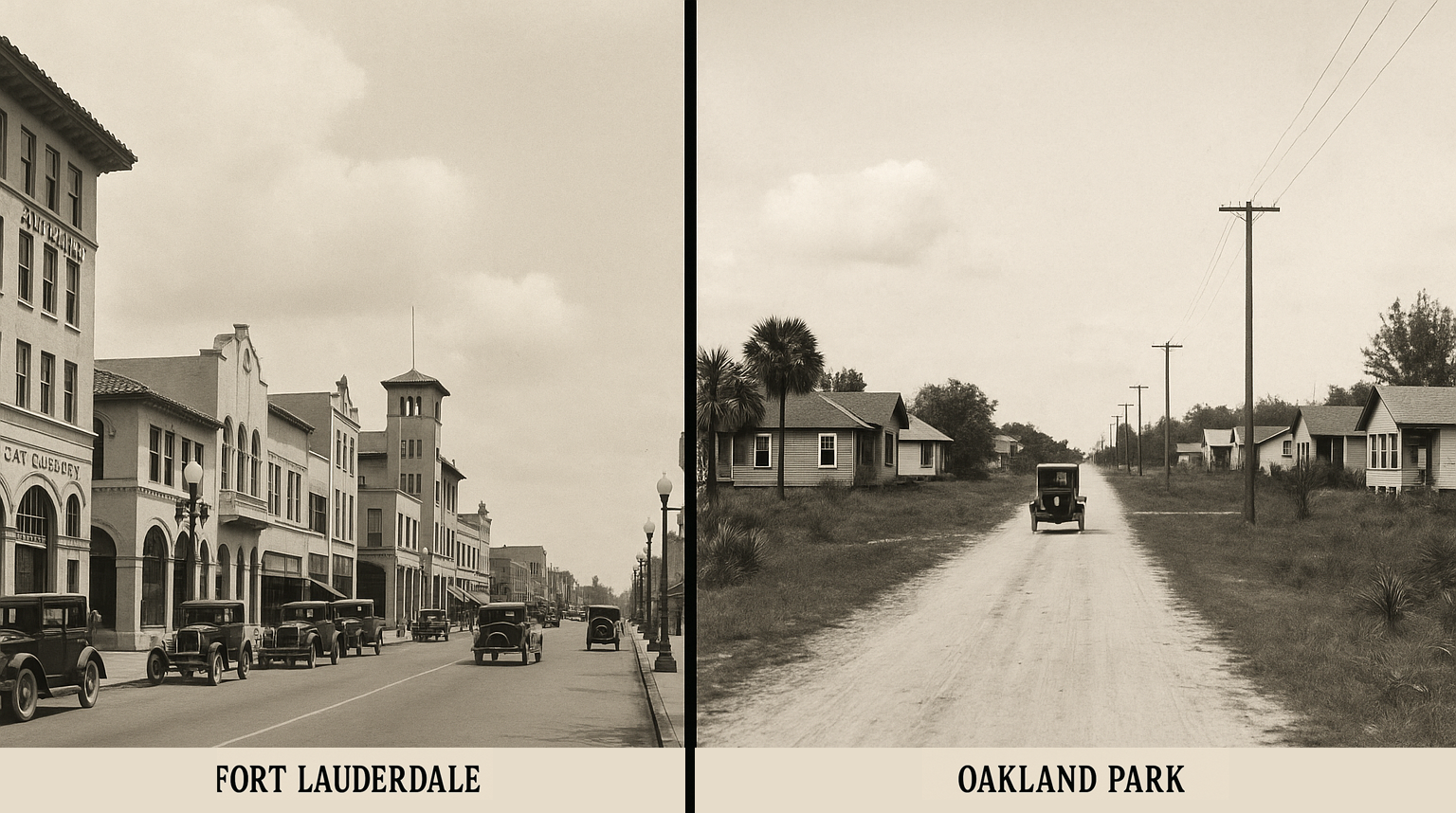From Swampland Dreams to Coastal Ambition
In 1925, Fort Lauderdale and Oakland Park were on the edge of transformation—two South Florida towns caught in the frenzy of the Florida land boom, just beginning to define their identities. What was once a tangle of mangroves and pioneer homesteads had quickly become a magnet for developers, investors, and dreamers chasing sunshine, prosperity, and the promise of coastal living.
Fort Lauderdale, just over a decade past its 1911 incorporation, was no longer a sleepy outpost. With the arrival of the Florida East Coast Railway, it became a key link between Miami and the rest of the East Coast. Streets were being laid, canals dug, and Mediterranean Revival buildings rose like mirages from the sand. The downtown area began to take shape, anchored by banks, shops, and elegant hotels that catered to a new wave of visitors—vacationers and retirees eager to escape northern winters.
To the north, Oakland Park was a different story. Officially incorporated in 1925, the town was rooted in agriculture—home to citrus groves, dairy farms, and some of the area’s earliest food distribution hubs. But Oakland Park was also feeling the ripple effect of its booming neighbor. Land was being subdivided and sold, modest homes were popping up along the Dixie Highway, and a working-class community began to take hold—supporting the surrounding region’s explosive growth with goods, trades, and labor.
This era was as romantic as it was reckless. Real estate was bought and sold on the strength of promises. Flyers advertised “waterfront paradise” while dredges tore through wetlands. The buzz of jazz, construction, and opportunity filled the air. And while the land boom would come crashing down after a devastating 1926 hurricane and an overheated market, it left behind the skeleton of what these cities would become.
Today, you can still see the bones of 1925 in Fort Lauderdale’s old neighborhoods and Oakland Park’s enduring sense of community. These cities were built on bold ambition—by people who believed in building something lasting out of the sand and palms. That spirit is alive and well, fueling ongoing redevelopment, reinvestment, and a growing appreciation for the history beneath our feet.
What was once promise is now legacy—and a reminder that every thriving city has a story worth telling.
